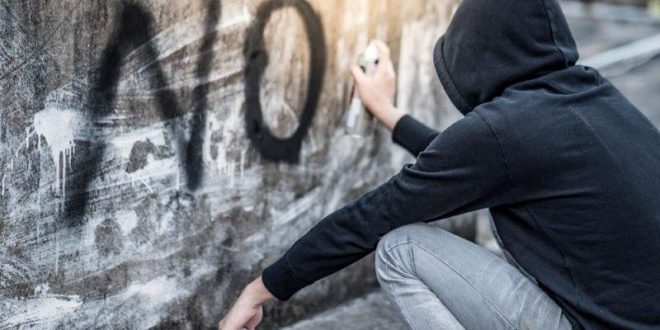By Baljot Rai
It was during my 2nd year in the university when our professor had asked us to write a research paper on any topic that is related to crime in Canada. I weighed out several options, however I kept on coming back to the one that hit close to home. Low and behold, I decided to study on the Lower Mainland’s Indo-Canadian Gang Violence. Every few weeks there’s a gang related murder or violence in the headlines of the lower mainland’s newspapers. The victim is usually Indo-Canadian and the murders are rarely solved or analyzed in an approach that attacks the issue as a whole.
My connection and motive to unpack the Indo-Canadian Gang Violence was centralized around my own experience of growing up in Abbotsford. Over the last twenty years, I have witnessed the impact of this crime and how it has transformed the community. My family had moved to Abbotsford from Merritt, as they pictured it to be the perfect small town to raise a family. However, over the years as the gang violence in the Lower Mainland grew, I watched the kids I grew up and played with become a part of this gang culture. And for some their lives ended before they could make it to our high school graduation. Currently, this issue of gang violence has grown to be the most severe considering the young ages of the gangsters and the corresponding homicide rates. Children as young as 11 and 12 years old are easily influenced by gang culture and can become part of them easily due to different ulterior motives such as money, drugs, guns, popularity. Many youngsters also become part of this lifestyle by just choosing a side and showing loyalty to an individual involved in the violence. However, the most important area of concern for me was “why are Apnay children always in the headlines for this reason?”
Although there are lot of resources available now about Indo-Canadian gang violence. Media, police and many non-profit groups are running programs to prevent young kids from entering the gang lifestyle. But there is lack of a scholarly analyzation in this area to make us better understand as to why more Indo-Canadian youth tend to become part of this gang culture as compared to other ethnic groups.
Through my research, I wanted to dig deep into the nature and extent of Indo-Canadian gang violence, when and how it started affecting Indo-Canadians, what the future holds for the communities affected, all while considering the matter of ethnicity regarding gang involvement. Through this article I want to share what I discovered during my research and how deeper understanding of Indo-Canadian culture can help us better understand this problem.
The interconnectedness of this community is essential when understanding the ethnic makeup of the population in cities such as Abbotsford and Surrey and why the perpetrators are typically under the age of 30 and are mostly of Indo-Canadian origin. I begin my story of Indo-Canadian gang violence from where it all first began. Of course, the name that comes to mind is Bindy Johal and the Punjabi Mafia. In correspondence, I compel a variety of reasons for how this issue has systematically grown from the 1980’s when mass numbers of Punjabis settled in the lower mainland. Since then, it is the issue that now is not just affecting the gangsters themselves and their families, but also the community as a whole by brazen shooting and stray bullets killing bystanders and drug deals happening on playgrounds.
This conflict has created a rift in cities such as Abbotsford, forcing many families to move out of the west area to isolate their children from violent neighbourhoods, ultimately portraying a negative image for the entire Sikh and Punjabi community who inhabit most of the homes in this area.
Statistics show that between 1994 and 2006, the total number of homicides in Greater Vancouver was 695 (Statistics Canada, n.d.). So, while Indo-Canadians made up approximately 9.9% of the total population in Greater Vancouver in 2006 (Statistics Canada, 2008), they accounted for approximately 14% of the homicide victims over the previous twelve years – a situation of obvious concern. This is crucial as the quantitative representation is quite significant, considering both the South Asian population and gang violence has exponentially increased since. Likewise, according to local authorities, groups broadly referred to as Indo-Canadian gangs had established themselves as mid-level players in the local distribution of marijuana and cocaine in the early 1990s (Gordon, 2000, p.42). This is essential when understanding the fundamental ways Indo-Canadian gangs have started up and what they have transformed to.
There are variety of undermining dynamics behind what compels these individuals to join and form these groups. We need to understand why some of these individuals are more likely to engage in crime than others due to the focus on the immediate social environment such as family and peer group and school. Part of the answer to this question is that Indo-Canadian gangsters participate in multiple areas of crime related activities across a broad range such as getting into violent fights, dealing drugs and brazen shootings.
Another dominant factor in this equation is thoroughly examining the behaviour and characteristics of these individuals within the Indo-Canadian culture’s gender roles, such as being a dominant male in their household where from a young age their superiority is acknowledged and they are raised on a pedestal, being applauded for all they do.
How society is dealing with this crime related violence and the response from the community is important. This would include the media, law enforcement, family and programs in order to improve the understanding on how to approach this issue. Through my experience, I have observed that there is much media coverage on the Indo-Canadian gang violence and homicides, however there is often little indication on the follow up of these murders. This leaves room for questions such as if the suspects have been brought to trial or if charges have been laid.
On the other hand, implementing drug task forces and gang crime units is impactful and has made a difference in municipalities such as Abbotsford. This utilizes a multi-faceted approach that deals with gang enforcement as well as community involvement and youth intervention to not only target active criminals, but encourage and promote awareness and gang involvement prevention (Abbotsford Police Department, 2017).
Many homicides covered in the news and in media, indicate that the victims had been given prior warnings by police. For instance, in the case of 19 year old Varinderpal Singh Gill, the Abbotsford Police Department issued a warning in which they said he was in danger of being killed and his presence in public places could put other lives at risk (V.Hopes, AbbyNews, 2018). In a follow up news article after the young male’s murder, the Abbotsford Police claimed they had also warned Varinderpal and the rest of Gill family that their son’s life was in danger due to his actions and ties to criminal activity (V.Hopes, AbbyNews, 2018). This is significant as this leaves the public wondering why more precautions cannot be taken rather than issuing a simple warning to the victims and their families.
This also brings us to another important point on parenting. Parenting needs to be re-evaluated in context of Indo-Canadian gang violence. Many parents spend more time working since they have to run a family, but this results in a loss in communication and trust between parents and their children. Children that are exposed to violence, changing family situations, and uncertainty about their futures learn unhealthy ways of reacting to life’s challenges and stresses. It is believed that these influences affected Indo-Canadian youth and to counter them there was a need to create opportunities for youth to acquire important life skills.
The Indo-Canadian community is not ignorant of this concern. The community has realized how the issue stems from within and can be a part of this solution to prevent young Indo-Canadians from following this path as well open up communication at home. Actions have been taken by the community. Amar Randhawa co-founded ‘UNITED,’ a group designed to educate elementary aged children and get them involved in sports programs. This group also provides seminars to teach parents about the importance of getting involved in their children’s lives. The group is also involved in information dissemination. They produce resources that highlight role models for kids. There are many other organizations both at government and individual levels working to find solutions for preventing youth from this life. However, the solution of Indo-Canadian gang violence likely requires families and the community to cooperate in the identification of criminals, as well as actively preventing and addressing the root cause of Indo-Canadian gang violence.
 Baljot Rai was born and raised in Abbotsford, BC. She is currently a student at the University of British Columbia and aspires to go to law school after graduation.
Baljot Rai was born and raised in Abbotsford, BC. She is currently a student at the University of British Columbia and aspires to go to law school after graduation.
The views expressed in this article are that of the author
 Desi Today Magazine
Desi Today Magazine




